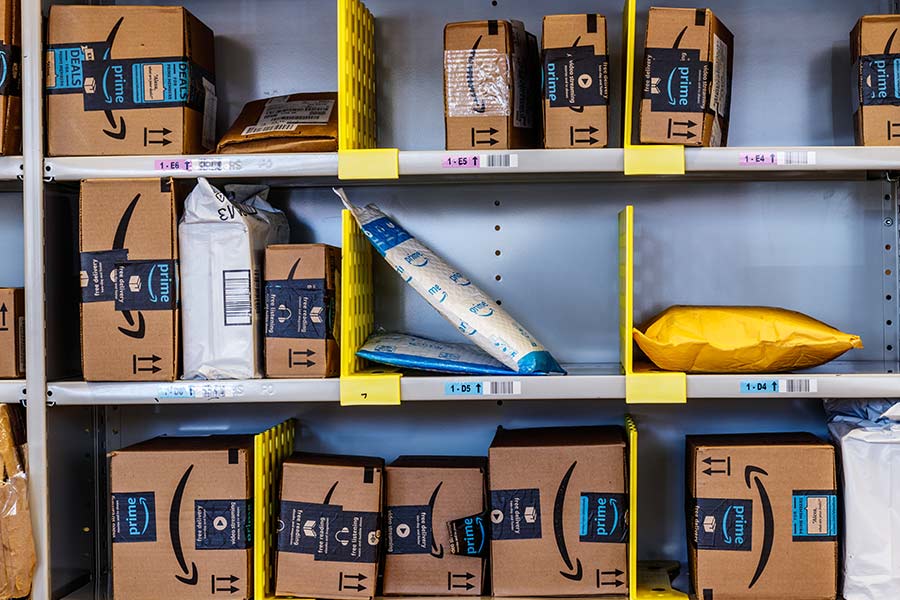University
Stickerless, Commingled Inventory

Stickerless, commingled inventory is the term that Amazon uses to refer to the products that are stored within their fulfillment centers that do not have a specific Merchant ID associated with them. While most of the time, every item that a seller sends to one of these warehouses comes complete with its own label identification that links it back to that seller, all sellers also have the option of combining their products with those of other sellers who are selling the same products. This is known as commingling.
How Stickerless, Commingled Inventory Works
When items are commingled, the actual item is not attached to the seller, just the item’s identity. This means that when an order is placed for that item through a specific seller, the order is credited to that seller, but the item might be any of a number of those exact same items that are being currently stored within the Amazon warehouses.
Benefits of Stickerless, Commingled Inventory
While the concept of stickerless, commingled inventory may seem counterintuitive to the average, organized storeowner, there are in fact several benefits to using this service. The two main benefits are:
1. Easier processing. Whenever a product is sent to one of the Amazon fulfillment centers, the seller most create and attach appropriate labels before it can be accepted, recorded, and entered into the warehouse. While the process is made easier by services provided by Amazon such as the Fulfillment by Amazon (FBA) labeling service, the easiest way to eliminate this tedious and time-consuming task is to avoid using labels altogether. The only legitimate way to do this is by opting for stickerless, commingled inventory. Since these items don’t require labels, the seller eliminates this cumbersome job entirely.
2. Expedient shipping. Since the item that is being ordered doesn’t have to be the specific one that the seller has catalogued into the Amazon warehouse, Amazon can choose whichever fulfillment center is closest to the buyer and ship from there. In this way, the order is shipped and received much faster, making a more efficient order completion process and a happier customer.
Stay on top of the latest e-commerce and marketplace trends.
How to Use Stickerless, Commingled Inventory
To turn on stickerless, commingled inventory, a seller should follow these steps:
- When the seller is ready to send out his first shipment, he can find the Inventory Settings under the Fulfillment by Amazon area within the settings tab.
- Find the stickerless, commingled inventory setting, and press the Edit button.
- Click Enable, and then save the changes in order to activate the service.
Stickerless, commingled inventory can be turned on or off whenever the seller desires, but there will be a labeling process to follow and all items will have to be re-listed within the seller’s listings. As with the shipment process, if the seller chooses to retract an item from commingled inventory, he may receive another identical item from a different seller.
Items That Qualify for Stickerless, Commingled Inventory
Not all items that are listed on Amazon are eligible for the stickerless commingled inventory option. Qualifying items must meet the following qualifications:
- Items must be in mint condition. No damaged, gently used, or open packages are acceptable.
- Items must qualify as “evergreen items,” meaning there is no expiration limitation on the item.
- Each item must have a clear barcode that can be scanned. An EAN or UPC code must also be present on the item, and this barcode must be applicable only to an individual ASIN.
- Media items (including DVDs, VHS, CDs, software, and video games) do not qualify for this service.
Amazon holds the right to alter these requirements or eligibility of an item without prior notification.
Note: Stickerless, commingled inventory is only available to sellers using the Fulfillment by Amazon services. Items shipped by the seller hold no such identifying qualifications.



![7 Ways to Successfully Liquidate Amazon Inventory [Guide]](https://feedvisor.com/wp-content/uploads/2019/02/cover-amazon-7-ways-to-successfully-liquidate-inventory-280x186.jpg)